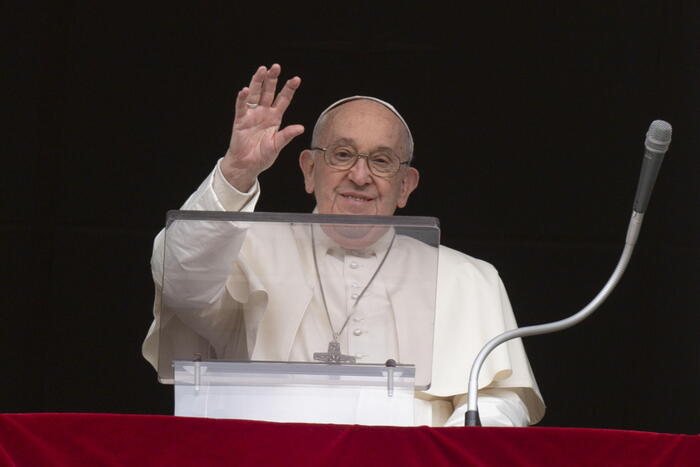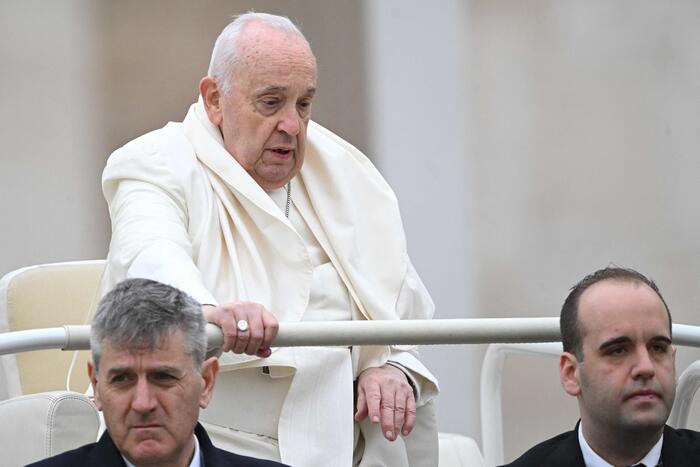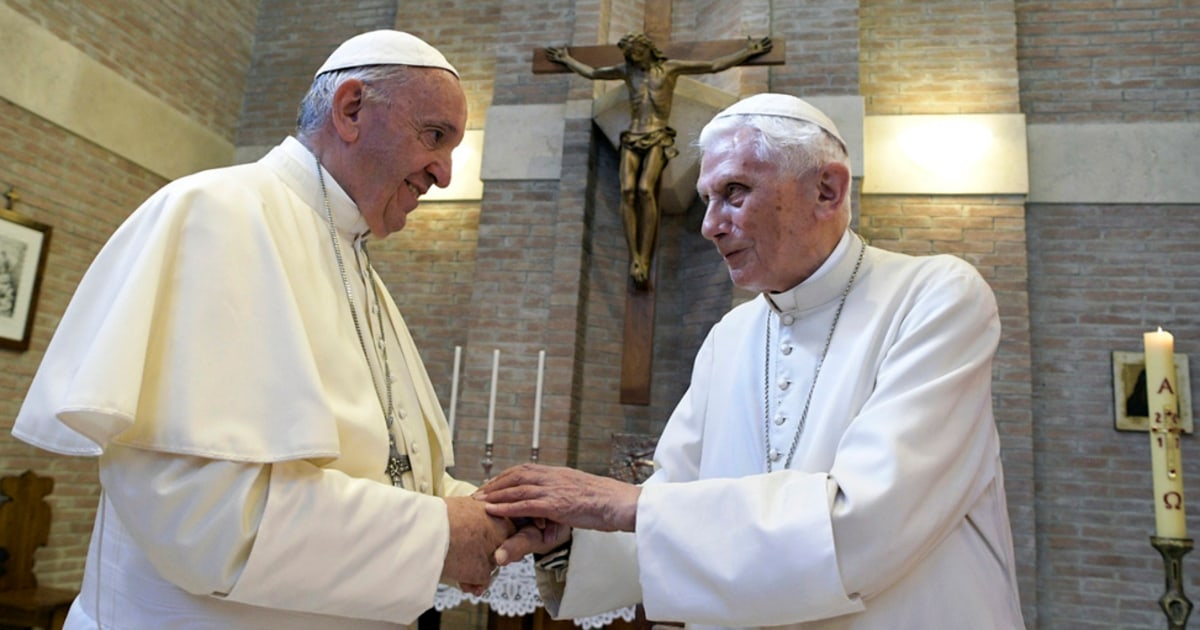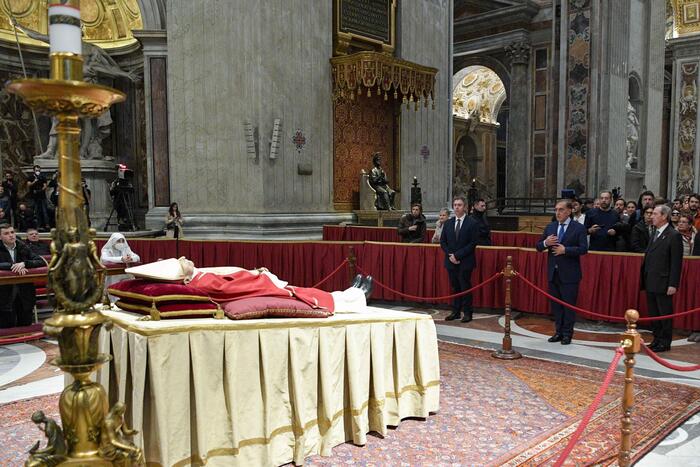Icon: enlarge
Priest Roni Salim Momika in Karakosch: Pope's visit as a sign of solidarity
Photo:
Ivor Prickett / The New York Times / Redux / laif
Pope Francis braved the security threats and the pandemic as he embarked on his four-day trip through Iraq last week.
He knew that the people in Iraq were waiting for him, said the 84-year-old.
And so he prayed in a church in Baghdad where Christians died in an attack in 2010.
With Grand Ayatollah Ali al-Sistani, he met the most important Shiite scholar in Iraq.
In Mosul, where the terrorist militia "Islamic State" (IS) once proclaimed their caliphate and vowed to march to Rome, the Pope has now raised a dove of peace between the ruins.
The trip was a sign of solidarity with the ever-shrinking Christian community in the country.
The pontiff continued the dialogue with representatives of the Muslims and advocated reconciliation.
The numerous simple but powerful symbols will not solve the complex problems facing Iraq.
For many people, however, they were a source of strength and hope.
So what remains of this remarkable journey?
Icon: enlarge
Pope Francis on Sunday in Qaraqosh: source of strength and giver of hope
Photo: VATICAN MEDIA / via REUTERS
For me, who during the IS rule from 2014 to 2017, traveled almost a dozen times to Northern Iraq for SPIEGEL, it might be a cell phone clip from the city of Qaraqosh that I discovered by chance on the Internet on Sunday: I saw this video Priest Roni Salim Momika, whom I met three years ago while doing research.
He was wearing his black cassock.
Stand in the middle of the street and dance.
His raised hands directed the euphoric crowd waiting for Pope Francis.
Every fiber of his body radiated joy.
Icon: enlarge
Priest Roni Salim Momika in Qaraqosh in March 2017: Furious hatred
Photo:
Katrin Kuntz / DER SPIEGEL
That made me very happy.
Because I had already experienced Priest Roni differently.
When I met him for the first time, in March 2017, he was walking through a cemetery in his city, Qaraqosh, 35 kilometers southeast of Mosul on the Nineveh Plain, the center of Christianity in Iraq.
The black cassock was snug around his shoulders.
Searching, he ran past the burial chambers.
A little later he would bury a man whom the "Islamic State" had strangled and carelessly thrown into the cemetery.
Because he was a Christian and thus an enemy of IS.
Burned Bibles and figures of Mary without heads
The fighters of the "Islamic State" had already been driven out of the city.
But they had left havoc.
Priest Roni led us past broken crosses in the city.
We visited the remains of Qaraqosh's twelve once magnificent churches.
There was nothing left of its glory, which we had admired in 2014 shortly before the terrorists invaded the city.
A charred baptismal font.
Burned Bibles.
Figures of Mary without heads.
Broken pews.
The destruction and the hopelessness were so great that Priest Roni and we were often unable to speak.
We climbed helplessly through tunnels that IS had dug under the city to transport its ammunition.
Heard the story of an old woman who could no longer escape and who feared for her life under the IS in her house in Qaraqosh for years.
Icon: enlarge
Mass in a destroyed church, March 2017: Half of the Christian residents have left Iraq
Photo: Andy Spyra
The jihadists had trained to shoot in the church of Saint Behnam et Sara, and the torsos of mannequins with holes were lying on the floor.
IS had left booby traps and used garages and houses as workshops in which they had made car bombs.
We were stunned by the traces of the raging hatred that had descended upon Qaraqosh.
At that time, Priest Roni showed us his house where he had found underwear from women allegedly raped by IS.
ISIS has dealt a heavy blow to Christianity in Iraq
In 2014, Father Roni was one of the last to leave Qaraqosh.
He was one of the first to come back in 2017, lived in the midst of the destruction and tried to be an example to his community.
At that time, the former residents of Qaraqosh only ventured into the city for a few hours.
They came from Erbil, the capital of the Kurdistan Autonomous Region, an hour and a half away, to check on their looted houses.
more on the subject
Trip through Iraq: Pope Francis prays for war victims in a former IS stronghold
Icon: Spiegel PlusIrak: Exodus
Francis in Iraq: March 6th becomes an Iraqi holiday after the Pope's visit
Icon: Spiegel Plus War of Faith: »God, stand by us« By Katrin Kuntz
1.3 million Christians lived in Iraq under Saddam Hussein; today there are said to be 200,000.
ISIS has dealt a heavy blow to Christianity in Iraq.
About half of the residents of Qaraqosh had left Iraq at the time.
The Church estimated that around 40 Christian families migrated abroad every week.
Today around 27,000 people live in Qaraqosh again.
The church largely rebuilt the city.
Four years later, when I call Father Roni on this Monday in March, he is hoarse with joy.
He has sung so much the past few days, he croaks.
An irrepressible energy ran through him.
"I don't know what was going on myself," he says and laughs.
"It was like a dream." They spent three months preparing the Pope's visit here.
For the first time in four years of Hope, Struggle and Reconstruction, there was such an opportunity to celebrate.
On Saturday, one day before the pontiff's arrival, he led a march with 20,000 people.
"We had flags with us, we sang and danced and shouted: Welcome, Your Holiness, to Qaraqosh!" There was still fear that the Pope might cancel, so the people of Qaraqosh prayed all Saturday.
Pope Francis recognized the pain
When he turned into Qaraqosh on Sunday, tens of thousands who had lined up for hours on the streets burst into cheers.
Pictures show people waiting with palm branches and balloons.
Only a few would have got hold of tickets for a seat inside the cathedral.
Out of solidarity, he too stayed outside with those waiting.
The Pope heard the stories of a family that lost two children to IS.
A priest told him about the destruction and reconstruction of the city.
"Today we celebrate the return from the Exodus," he said.
A choir sang.
When Pope Francis left Tahera Cathedral, many devout Christians stormed in and kissed the chair he was sitting on.
Priest Roni had to cry.
Pope Francis gave the people what they had been missing for so long: assistance.
Acknowledgment of their pain.
International attention.
Christian family who were one of the first to return to Qatar in 2017: they have the strength to stay
Photo: Andy Spyra
"His visit gave us the strength to be and stay in Iraq," says Father Roni.
"The world now sees that there are Christians in this country and have always been."
The Pope had inspired Christians and Muslims to seek reconciliation and peace.
In addition, the visit of the pontiff had upgraded the Christian communities compared to the central government in Baghdad and the Kurdish regional government in Erbil.
I hope so, says Priest Roni.
Much of the people in Iraq are young.
For the youth, who have experienced nothing but suffering in recent years, the Pope's visit was the first positive major global event in their lives that received international attention and revolved around reconciliation rather than violence.
Icon: The mirror







